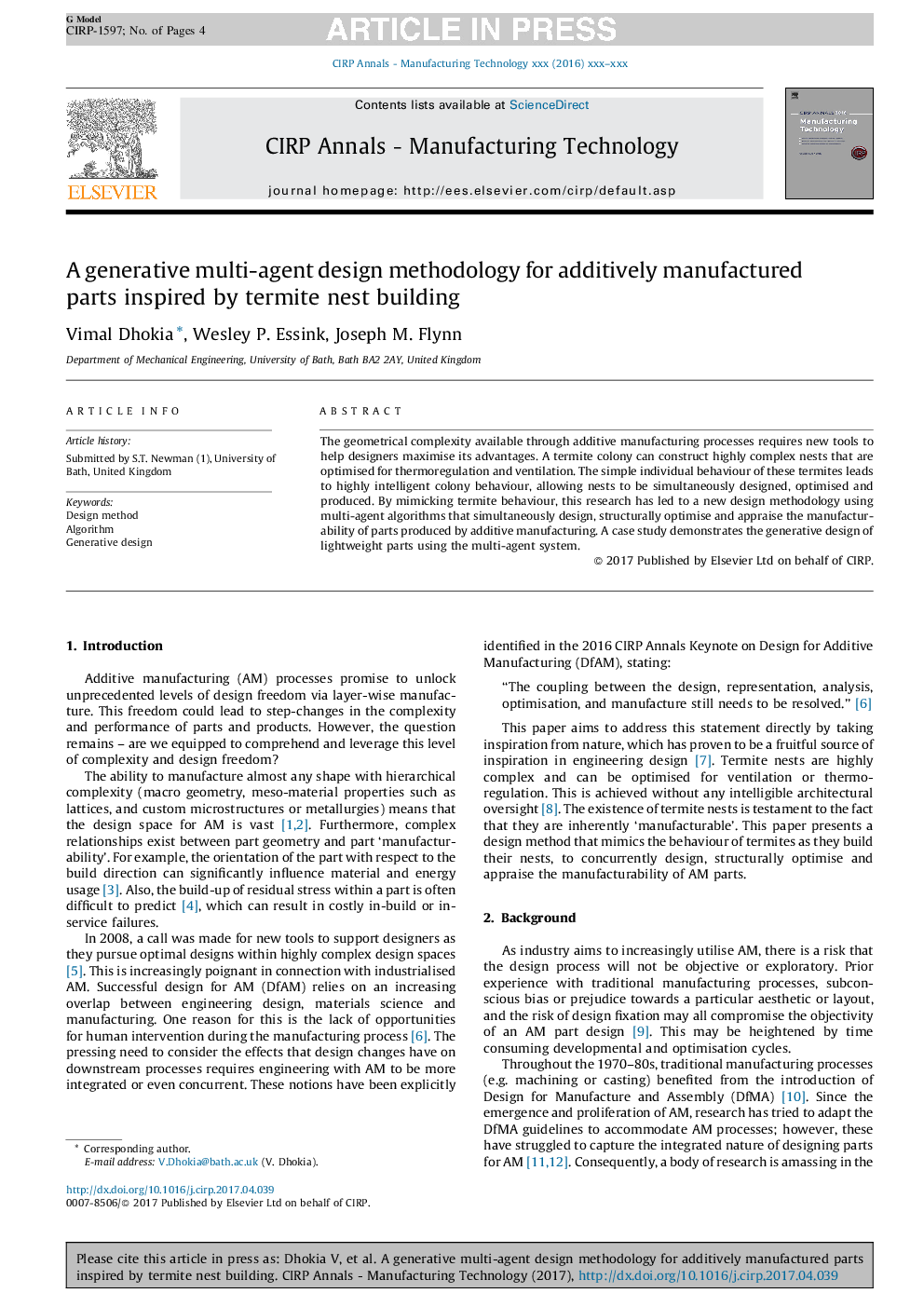| Article ID | Journal | Published Year | Pages | File Type |
|---|---|---|---|---|
| 5466959 | CIRP Annals - Manufacturing Technology | 2017 | 4 Pages |
Abstract
The geometrical complexity available through additive manufacturing processes requires new tools to help designers maximise its advantages. A termite colony can construct highly complex nests that are optimised for thermoregulation and ventilation. The simple individual behaviour of these termites leads to highly intelligent colony behaviour, allowing nests to be simultaneously designed, optimised and produced. By mimicking termite behaviour, this research has led to a new design methodology using multi-agent algorithms that simultaneously design, structurally optimise and appraise the manufacturability of parts produced by additive manufacturing. A case study demonstrates the generative design of lightweight parts using the multi-agent system.
Related Topics
Physical Sciences and Engineering
Engineering
Industrial and Manufacturing Engineering
Authors
Vimal Dhokia, Wesley P. Essink, Joseph M. Flynn,
